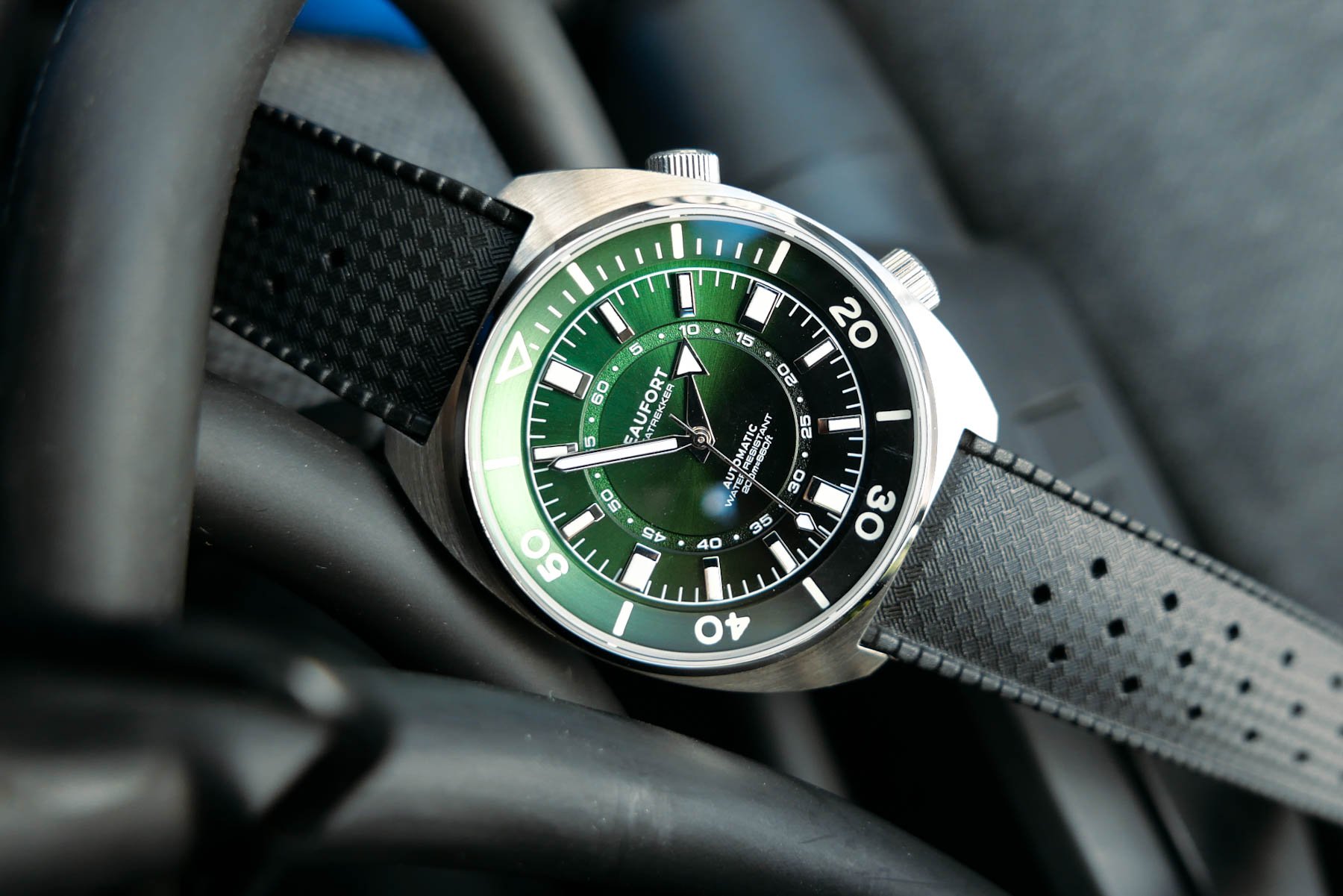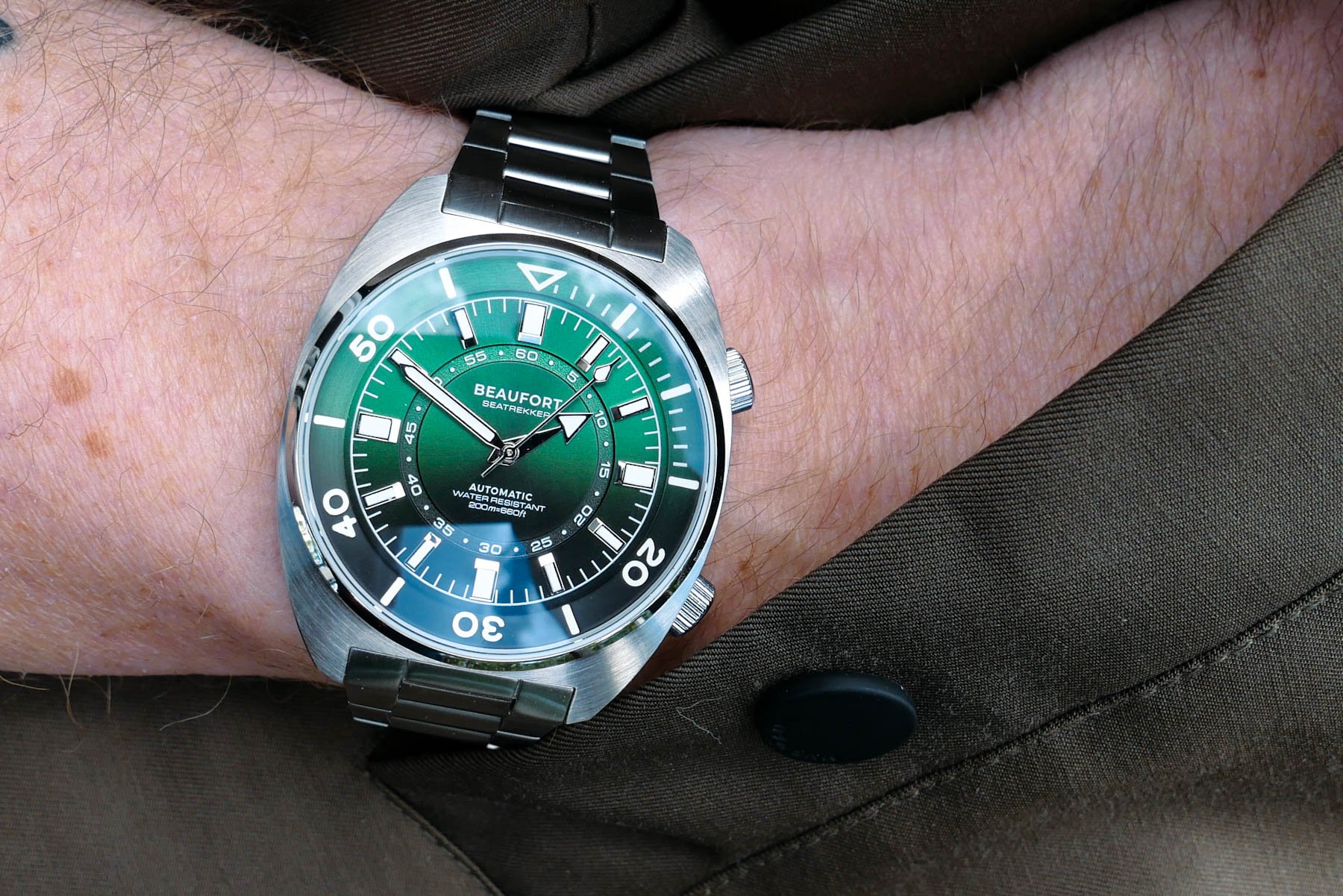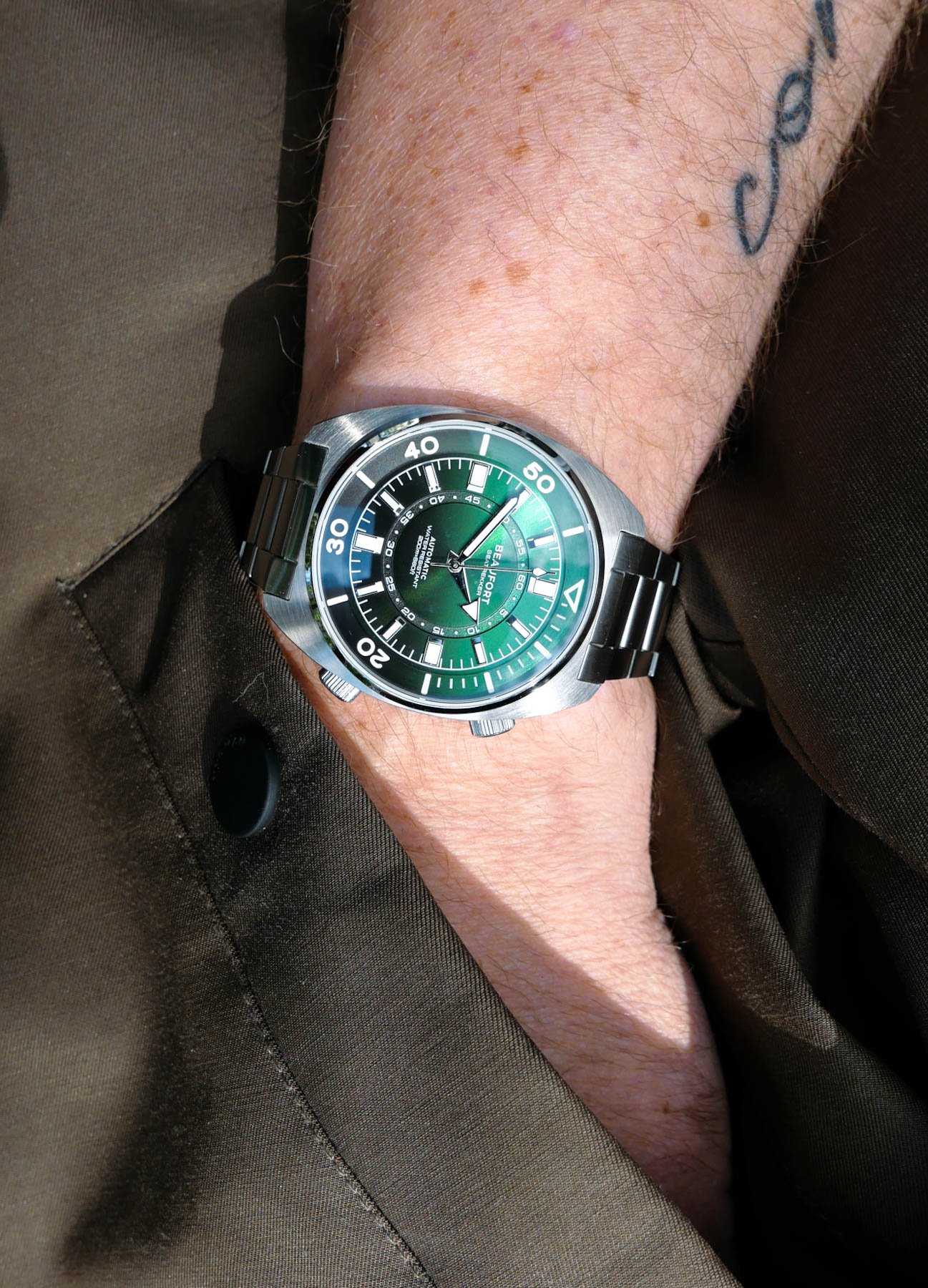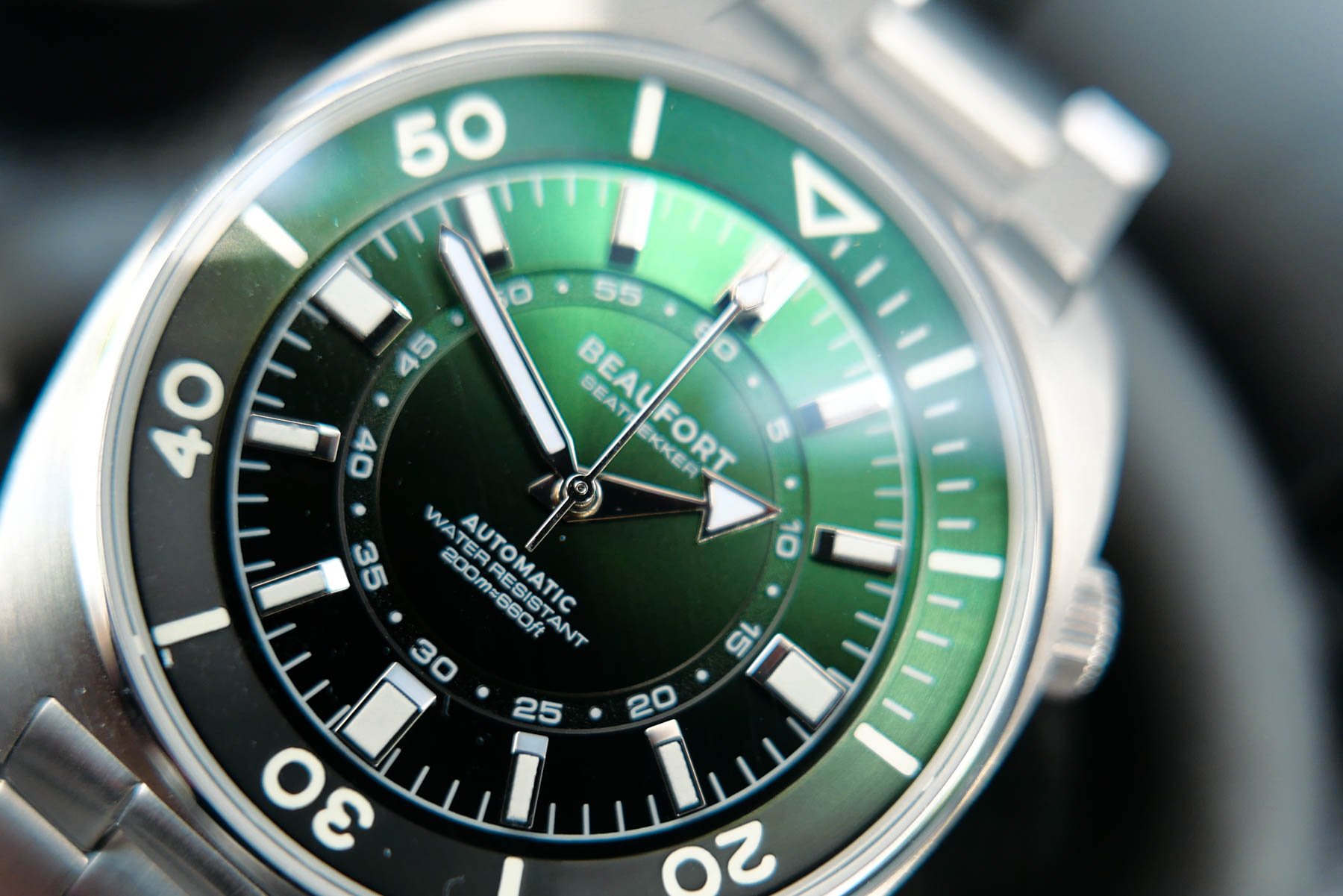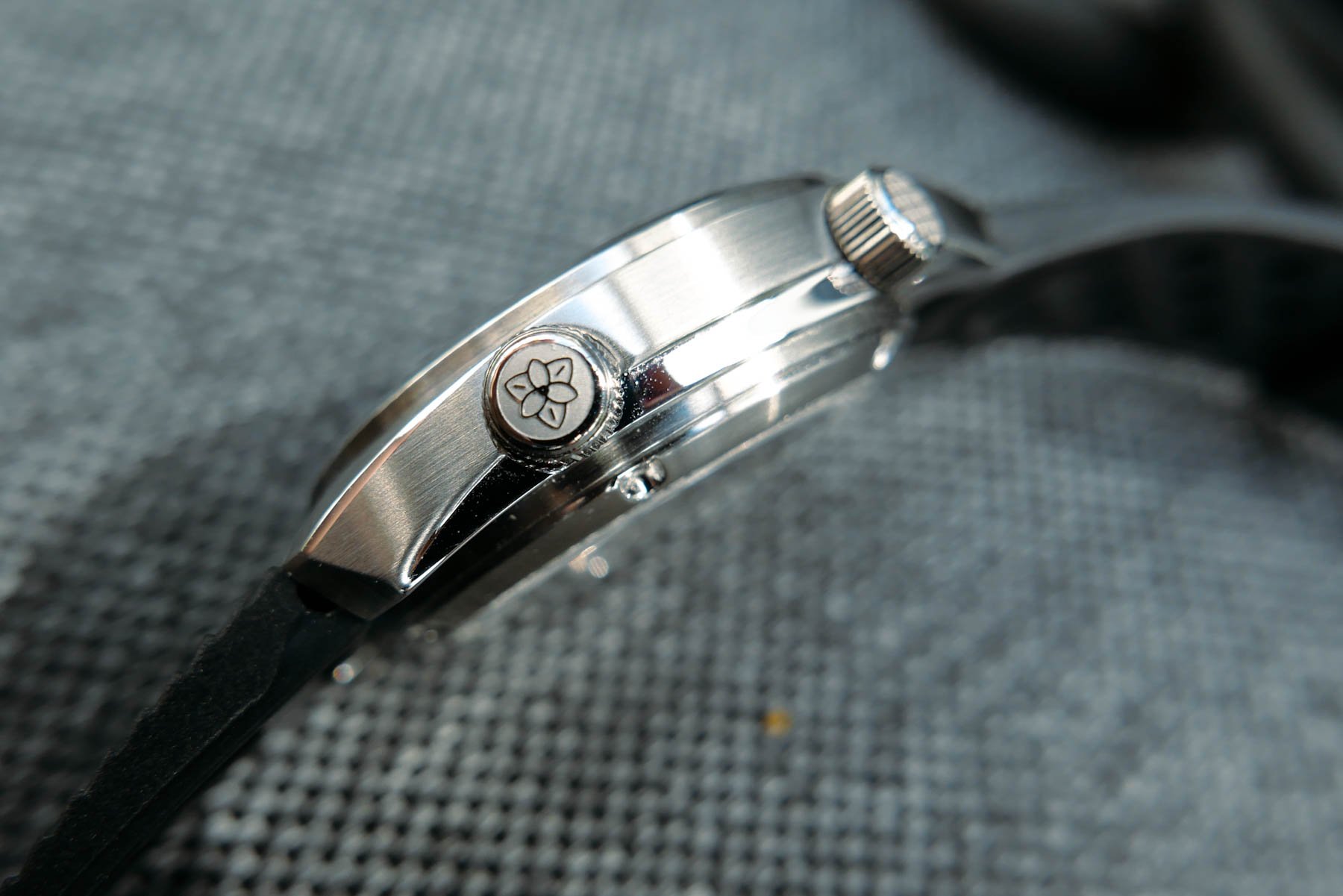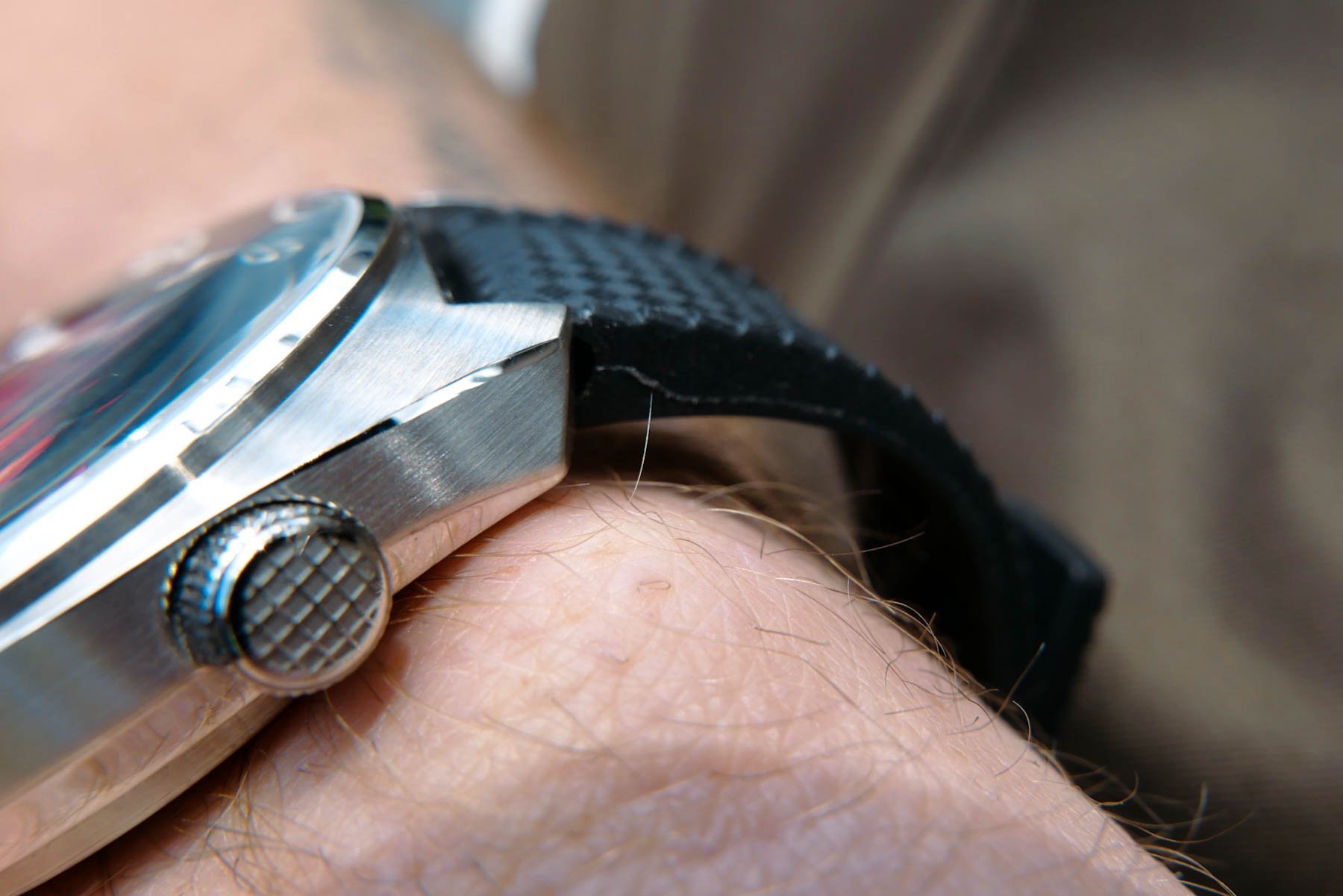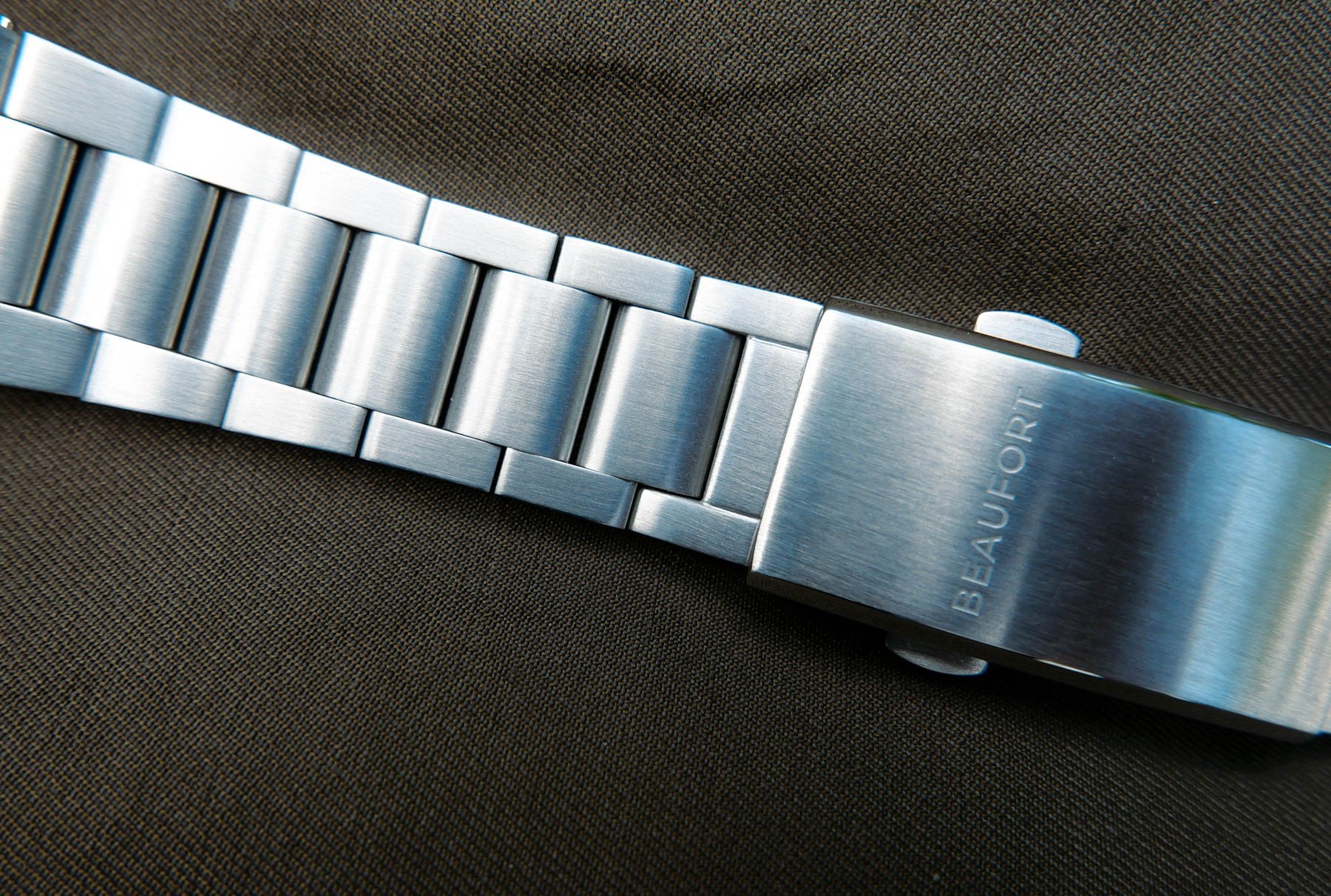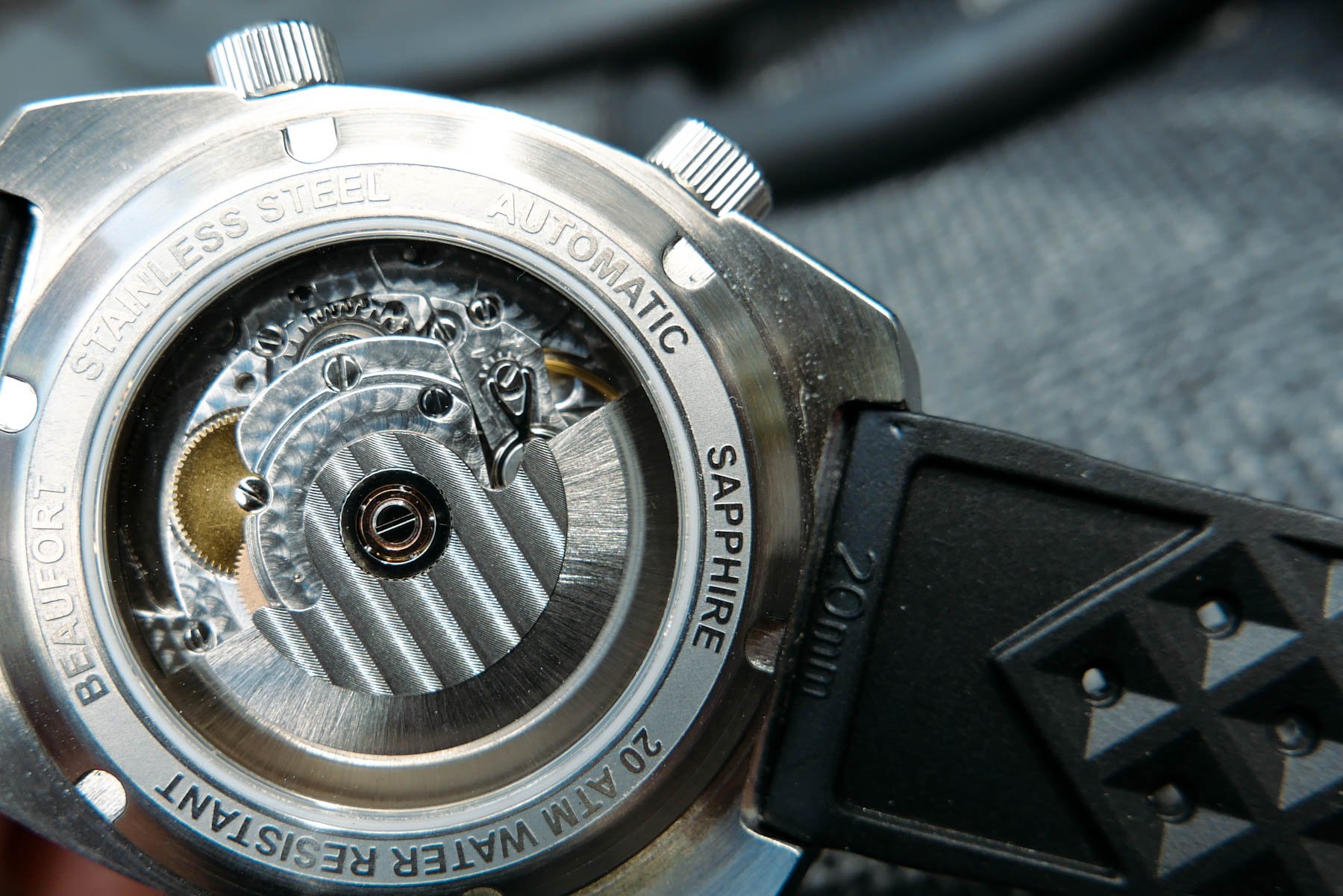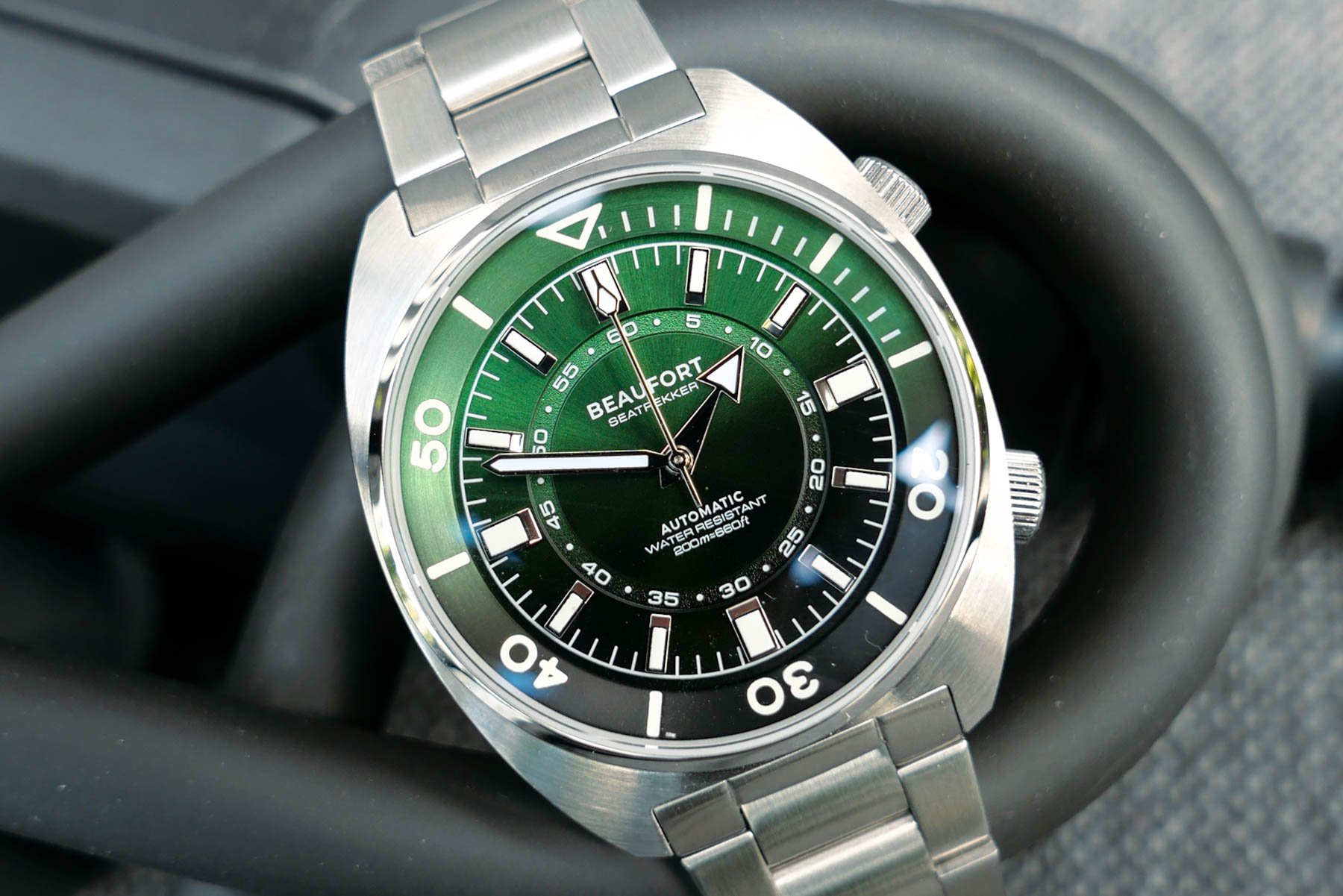Hands-On With The Beaufort Seatrekker — A Big-Hearted Dual-Crown Diver From New Zealand
When I feel my appetite for retro filling up, something catches my eye in a typical fashion. A good dégradé dial does that to me, and green is supposedly the color of 2024, right? Combining this with a busier-than-usual Super Compressor-style dial sounds like too much, but the Beaufort Seatrekker might prove me wrong.
I’ll also be honest about the concept of two crowns. I haven’t been the strongest ambassador for the twin-crowned cool of the Super Compressor look as I’m more of a one-crown purist. But as with every design, good alternatives seem intent on proving me wrong, and this brand has that potential.
A solid first impression from Beaufort
I had two watches sent to my Arctic office from far away as Beaufort is based in New Zealand. Judging by the two watches (expect a review of the Pulsatimer soon), the brand has a refreshing approach to retro. The dial seems to be the star of the Beaufort Seatrekker, but the tonneau case doesn’t lag far behind in the value stakes.
The New Zealand dollar isn’t strong, so the NZ$1,049 sticker price equals about €600. Comparing the Seatrekker and its Super Compressor look to, say, a Farer Aqua Compressor, which uses actual compression technology at twice the cost, might be comparing apples and beautifully finished titanium oranges, but still. Size-wise, the Seatrekker works exceedingly well, with a 39mm width and neat 46.1mm lug-to-lug. The last figure feels very different on the steel bracelet versus the Tropic-style strap, but I’ll return to that. Let’s first address the dazzling green dial.
A Super Compressor-styled watch will always seem busier than its standard dive/sports-watch equivalent. This is because everything is captured under the crystal, including the timing bezel, which the 2 o’clock crown adjusts. Thankfully, Beaufort has managed a mature design here. Both crowns are tucked neatly into the case body, unlike many obstreperous crowns on which I’ve caught shirt and sweater sleeves. The dial has a well-executed dégradé finish, starting with a bright ’70s apple green on top and darkening to black at the bottom. There is also a circular brushing to the inner dive bezel that stays true to the green while offering a discreet difference in sheen to the sunburst dial.
Green delights
The print is white and crisp in a clean-cut and modern font. It beats fauxtina for legibility, which is a good idea on a relatively busy dial. The inner bezel moves smoothly and confidently, which cannot be said for all watches of this style. And I confess that after spending a night with the Seatrekker (don’t tell the wife), the C3 lume lasts for hours. All this sits in a well-appointed tonneau case with a slim, beveled edge that follows the lug shape. This is a big plus worth the production expense, so bravo to Beaufort. There is also a scalloped base to the flanks, and the sapphire window on the rear shows off a nice machine-decorated movement. During a couple of days with me, it ran well at only about +5–10 seconds per day, which is another big plus.
A question of strap science
So, let’s address my only concern, which is the fit of the Tropic-style TPU (thermoplastic polyurethane) strap. TPU is stiff but does not attract a single grain of dust and feels robust. But this one’s a challenge if you like a semi-loose fit like I do. The strap sticks straight out, with no space to move and angle downward. The tonneau case of the Seatrekker is well made, but the lug opening is made for a bracelet, not a fat strap, and is way too tight to ensure a good strap fit. The spring-bar holes are too far in, and even a thin NATO refuses to slip through without risking massive spring-bar tension or a break. To make it fit, the strap’s holes are too big for the bars. They actually get stretched to the point of half the hole poking out at the lug.
I have a 19cm (7.5”) wrist, and one smaller than mine would exacerbate the issue. It’s OK if you like a tight fit, but it will strain the spring bars. Wearing the watch loose makes for a big air pocket between the wrist and strap. Sorry about this rant, dear Beaufort; you might find another Tropic-style strap with different spring-bar holes. But I tried a personal alternative and had the same thing happen. However, the optional stainless steel bracelet from Beaufort transforms the fit. At NZ$130 (about €75), it is very well made, and swapping it out made a huge difference. With a custom end link, it fits silky smooth within the case and transforms the Seatrekker. If I were Beaufort, I would make this the default offering and leave the TPU strap as an option unless I found one with a better fit.
Steel on steel is the way to go
So, with the new steel-braceletted version of the Seatrekker fitted, wrist life is good. This bracelet tapers from 20mm at the end links to a vintage-like 16mm at the clasp with four holes for micro-adjustment. The solid steel clasp also has charming perlage on the folding arms, which was an unexpected bonus.
Beaufort calls it a flat-link bracelet; well, the outer links are flat, have reasonable clearance, and are partnered with slightly curved center sections. I’m a sucker for a polished bracelet side, even on a tool watch, and the New Zealanders don’t disappoint there either. The bracelet even has friendly screw-in links to boot. So yes, Beaufort should have fitted this bracelet as standard as the Seatrekker feels more complete, balanced, and, frankly, two to three notches up in quality. Thankfully, that quality is obvious and feels more mature than Beaufort’s young history.
The movement visible through the sapphire case back is the Swiss-made STP 1-11 automatic, which should provide a decent 44 hours of power reserve. Its design is very similar to the ETA 2824 and the Sellita SW200-1, and I am happy with its smooth crown action and decent accuracy, as I mentioned before.
In conclusion, the Beaufort Seaktrekker is very good for the price with a sharp case and an intriguing, well-made dial. Once again, Beaufort, I’d include the bracelet; the Seatrekker deserves it and is a better watch with it fitted. Overall, though, the Beaufort Seatrekker is a well-thought-out design and represents a good value at NZ$1,049 (roughly €600). It is available directly from Beaufort Watches.
How do you feel about the Beaufort Seatrekker, Fratelli? If you’re still up for more dive-retro goodness, then let me know in the comments.

